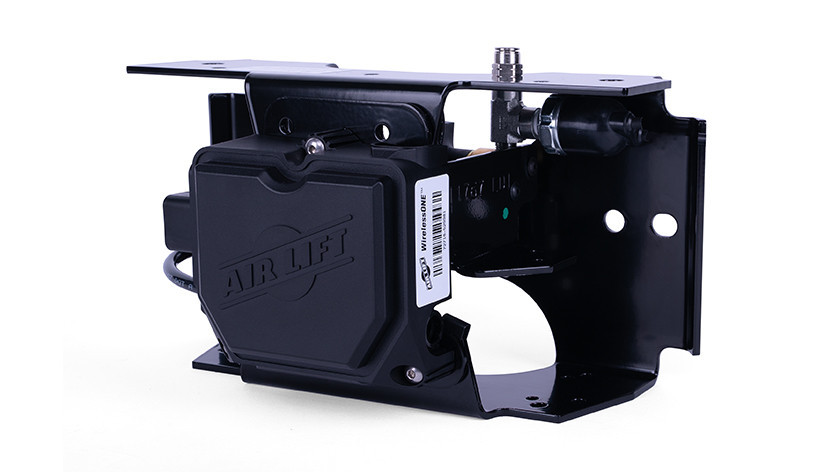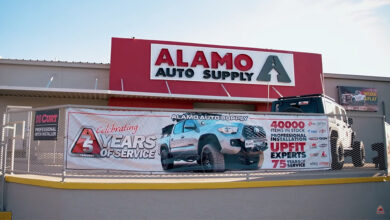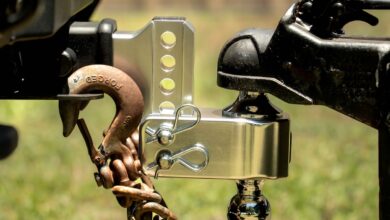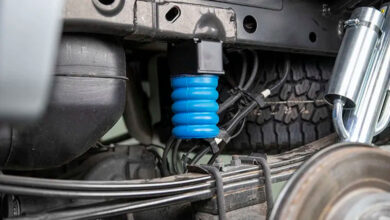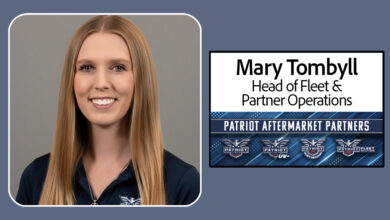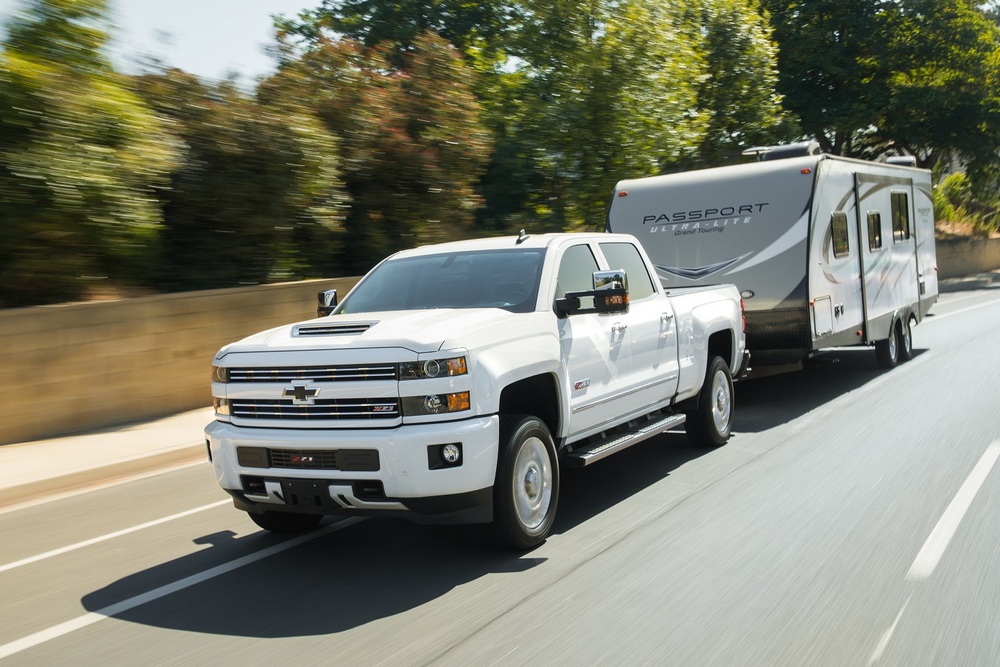
This article originally appeared in the December 2023 issue of THE SHOP magazine.
From peanut butter and jelly to rhythm and blues, some things are just meant to be together. The same can be said for your customer’s tow vehicles and trailers.
A healthy market that only seems to be growing, towing and hauling is all about making the right connections. And with a wide variety of products available, and an important safety aspect that shouldn’t be overlooked, customers are turning to professional shops to create the proper systems for their specific plans and goals.
Become an industry matchmaker by offering the parts, service and knowledge required to do towing right. Suppliers are happy to help with observations on the market, trends to investigate and new products to examine.
Now’s the time to join together to turn your customers’ towing dreams into reality.
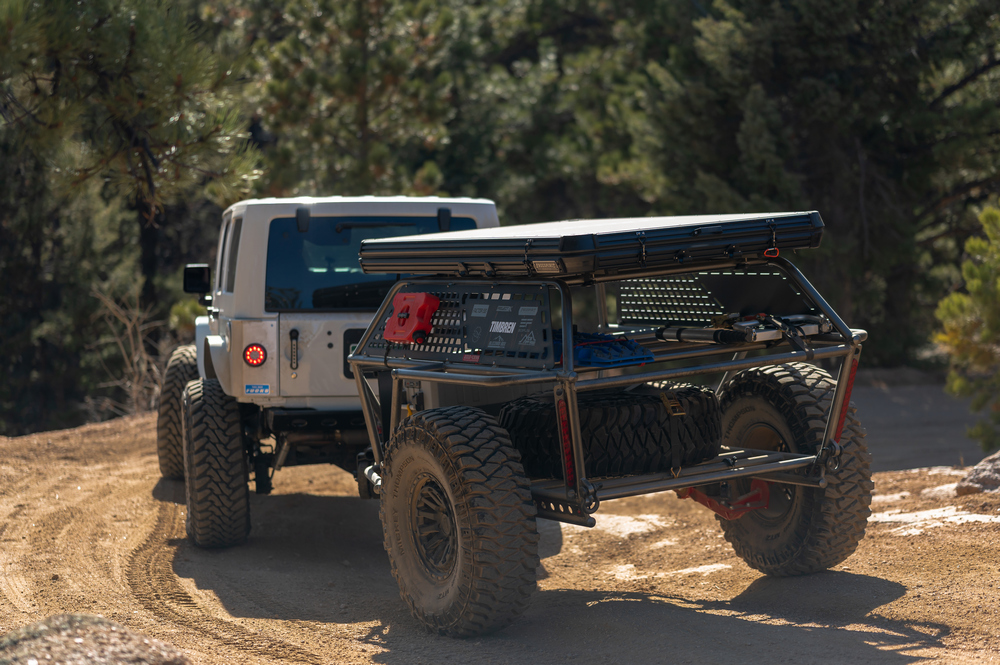
CALL OF THE WILD
The secret is out—many of your customers are looking to get away from it all.
“The biggest outside factor affecting the towing and hauling market is the drive for people to spend time outdoors and recreationally,” says Melanie White, CEO of Hellwig Products. “There is a big push for that right now and a huge opportunity to sell into this market.”
It turns out that customers just want to have fun.
“With side-by-sides, toy haulers and travel trailers being more prevalent and accessible, recreational enthusiasts have some type of trailer that needs towing,” says Loc Nguyen, project manager – electronics for aFe POWER. “Couple this with the growing truck segment of newer vehicles on the road and the aftermarket world is booming, with the constant need for more power and capability from your work-and-play truck.”
With the clientele in place, it’s time to make hay while the sun shines, says Chanakya Thakkar, marketing specialist for Timbren Industries.
“Seasonality affects consumer demand. The hotter it gets, the more sales you make.”
Despite their desires, however, disposable income can at times limit customers’ projects.
“Inflationary/recession economics play a factor as it relates to discretionary spending by households and the ability to travel, recreate and vacation,” notes Russell Brzezinski, senior group manager – product management for Draw-Tite, part of the First Brands Group.
Uncertain economic times direct consumers to efficient, durable products that are worth the price, says Justin Coulter, director of sales for SuperSprings International.
“You can’t ignore the colossal impact of the economy on the towing and hauling industry over the past few years. Limited access to materials, chassis and trucks, and added external factors, have sent shockwaves through the industry, compelling enthusiasts to squeeze every ounce of utility from their existing trucks and trailers,” Coulter says. “Due to this, maintenance has become an area of interest for many owners, especially concerning their vital suspension components. Resilience and resourcefulness are keys, as enthusiasts and professionals alike navigate this uncertain market.”
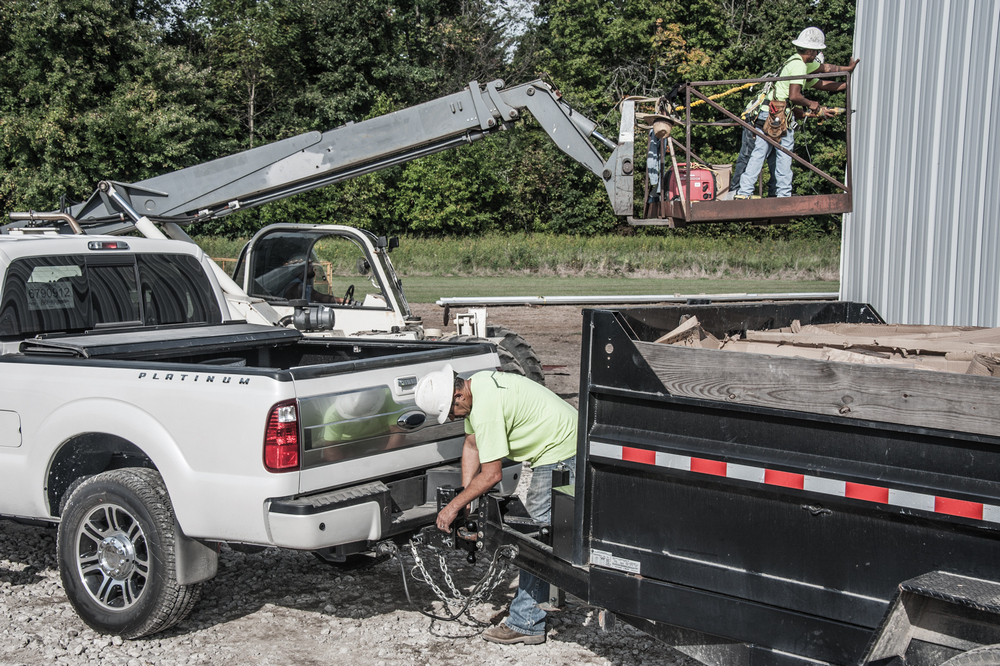
What is certain is that, as the industry grows, input from end users is helping manufacturers build better towing products.
“Customer demand is what pushes the production of new and innovative products and is improving the towing and hauling market as we know it today,” says Donna Schmucker, marketing director for GEN-Y Hitch. “By listening to the feedback of our customers, we learn so much about what the market needs.”
And those products fit a wide variety of vehicles.
“The availability and pricing of new vehicles continues to be a factor. In some cases, this may mean the customer has to ‘make do’ with what they have or buy an older used vehicle that they might not have previously considered,” says Laurel Brown, Southeast district sales manager – national team lead for Air Lift Company. “We continue to see strong sales numbers around our older applications as second owners upfit used vehicles and commercial fleets repurpose trucks they already own.”
MORE TO ADD
When it comes to outfitting tow vehicles, it can be best to think of them as complete systems.
“The biggest mistake we see is that shops only sell the customer the product they come in asking for,” White says. “There is a huge opportunity to educate and sell the customer on additional aftermarket products that will make their towing experience better.”
With so much to choose from, drivers will trust your knowledge and experience. There are cases, however, when you can take things too far.
“Sometimes shops get too much in the weeds about technical features rather than talking about how the product helps solve people’s towing and hauling issues,” Thakkar observes.
This includes factoring in the essential maintenance needs and comfort of the driver, Coulter adds.
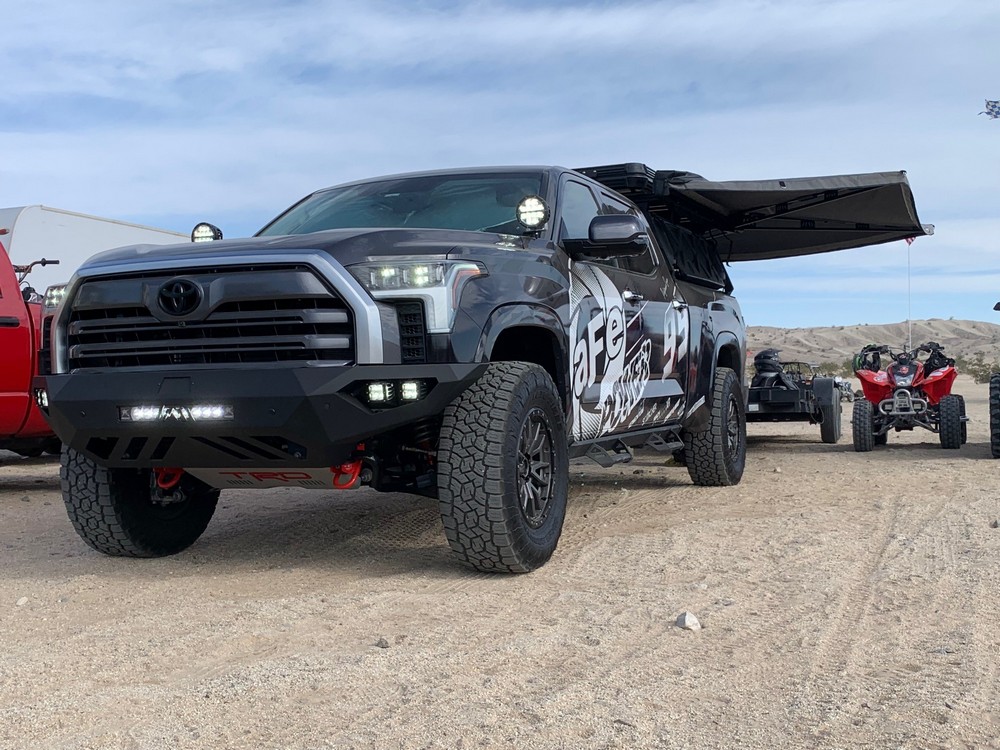
“It’s not just about slapping on a hitch or beefing up suspension components—the key is to assess how rigorously the truck or trailer will be tasked with towing duties versus its regular driving demands,” he explains. “Striking that delicate balance between towing prowess and everyday comfort can make or break the customer’s experience, and it’s a pitfall that shops should steer clear of at all costs.”
There’s also the understanding of only selling drivers what they need, says Schmucker.
“For instance, recommending customers install a weight distribution system. Customers seem to feel safer with a weight distribution setup attached, but many times it’s unnecessary for their setup,” she notes. “It’s thought to be safer but is not necessary for heavier-rated tow vehicles and lighter loads. It’s only needed for lighter-duty vehicles to prevent them from squatting with heavier loads.”
It helps to know the exact type of vehicle you’re dealing with.
“It is important to ask for specific details about any additional aftermarket items already installed on the truck and review the VIN or put eyes on the vehicle prior to ordering parts,” says Brown. “A customer may say they have an F-350 flat bed, but when it arrives for parts installation, you might discover that it is an F-350 standard chassis with a bed delete versus an F-350 cab chassis vehicle, which often require different part numbers.”
Regardless of the system or setup, shops will want to trust the products they offer. It starts with building strong supplier relationships.
“Don’t have the mindset that a ‘hitch is just a hitch,’” says Brzezinski. “There are many different attributes that influence the product and price positioning of manufacturers and brands. Appreciate the legacy of companies that have been in the towing business for 80 years or more.”
Familiarity will bring consistent results, says Nguyen.
“Shops can still make mistakes when installing a new device that they are not familiar with. In the case of our products, as with any electronic device, the issue can be solved by the process of elimination, such as: Did the ECU power down fully when disconnecting sensors? Were there any steps in the installation that we missed? Did all connectors click into place? Most issues can be remedied by calling the manufacturer and obtaining support instead of deeming the product defective.”
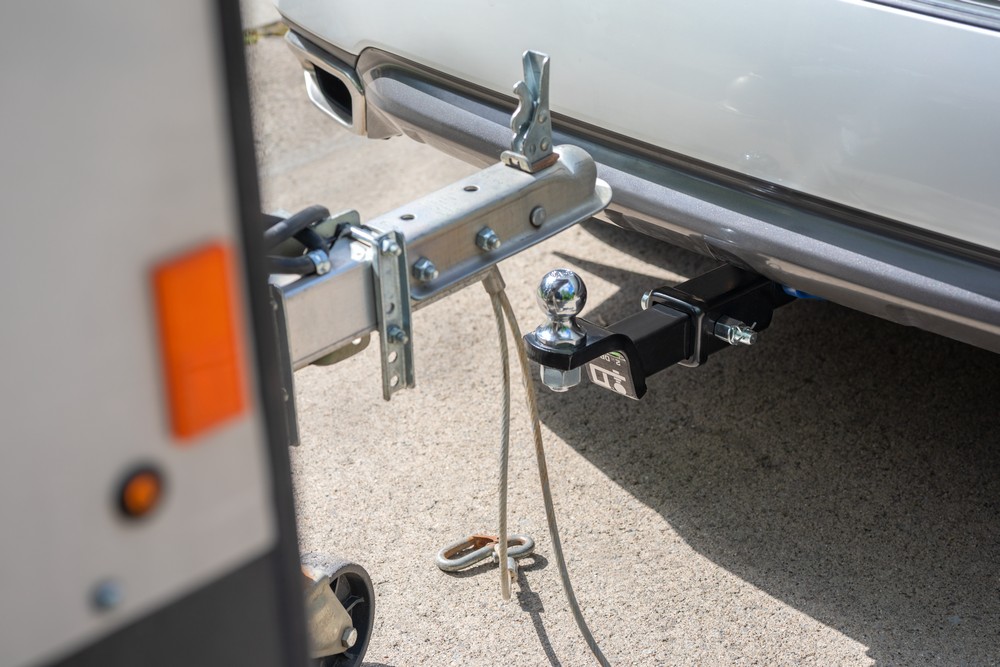
EXPERT SUGGESTIONS
Education is often the key to a successful sale, which means shops must be patient with their customers and explain what’s available and why it’s important.
“There is always an opportunity to introduce new products to a customer as our industry continues to develop new technology. You as a dealer and installer of towing and hauling products are trusted as the expert, which is why customers come to you versus buying product elsewhere,” says Air Lift’s Brown. “We often overlook that customers may not be familiar with complementary products that would assist them in what they are trying to haul. It can be as simple as asking if a customer has considered supplemental load support when they call about any hitch installation, but especially a fifth wheel hitch installation.”
GEN-Y’s Schmucker agrees with the importance of educating drivers on the additional accessories and upgrades available.
“Many times, a simple attachment could be the solution to an issue the customer is experiencing, or it could be an easy sell,” she says. “There’s a variety of additional accessories such as locking pins, hitch steps, hitch tighteners and more.”
As the professionals in these conversations, it’s on you and your staff to help customers build a safe, reliable tow package.
“Think about complementary products and make an additional sale,” says Hellwig’s White. “For example, if someone comes in for a rooftop tent, they will now have extra weight and will need sway control as well, so there is an opportunity to sell helper springs and sway bars. Or, if someone comes in to buy a hitch then they will be towing, so there is an opportunity to make sure their vehicle is fully set up for that. And make sure they have both load and sway control products.”
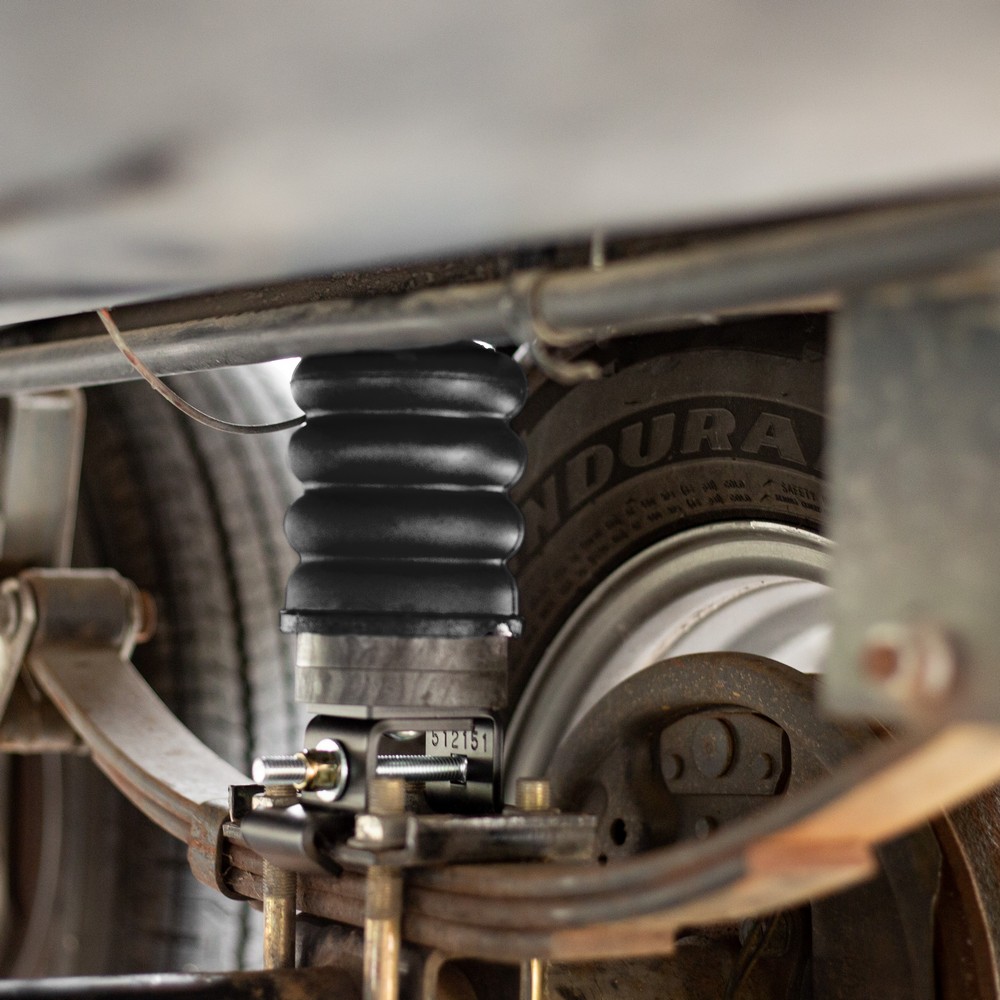
Lock down the driver’s plans and goals for the system in advance, advises Nguyen from aFe POWER.
“Communicate and confirm what the customer’s main expectations and concerns are. Offer a list of products that are best recommended based on their needs and educate and assist with the decision-making process. It is mutually beneficial when the customer’s needs are met and they are satisfied with the outcome. This reduces refunds and gains a long-term, repeat customer.”
When it comes to products, remember that top quality will drive increased revenue, says Brzezinski.
“Upsell the higher towing capacities offered through brands like Draw-Tite, such as the higher tongue weights to allow for more ‘at the receiver’ weight carry for bike or cargo carriers, and increase profits by offering the Hidden Hitch line of receivers where profit margins are quite high.”
To help your sales team, Timbren’s Thakkar provides simple steps when selling towing products:
- Focus on great customer service
- Offer robust products with strong warranties
- Focus on consumer education
Coulter from SuperSprings calls it the art of pursuing “supplemental sales.”
“Picture this scenario—a customer rolls into your shop seeking suspension upgrades for their trusty tow vehicle, but don’t stop there. Suggest complementary enhancements for their trailer, RV or whatever they’re towing,” he says. “Imagine the possibilities—optimizing the rear suspension of the tow vehicle for added stability while simultaneously amping up the front suspension to ensure a smoother ride and diminished body roll when hauling hefty loads. By seizing these supplemental opportunities, your shop can not only elevate profits but also have customers towing in style and confidence.”
